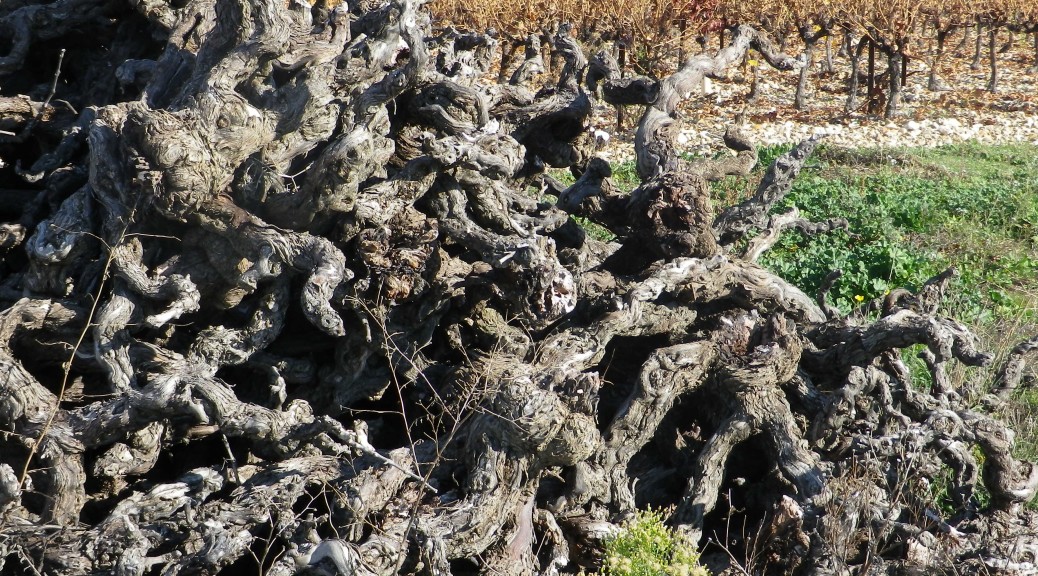What I Learned
The Cotes du Rhone French wine region follows the length of the Rhone River from south of Lyon to Avignon. This post differentiates some of the different appellations of the Cotes du Rhone Meridionale (the southern part of this region), specifically the Vaucluse county (around Avignon).
Cotes du Rhone wines are certainly ones most people come across today. These wines are, and have been for centuries, quite popular, especially among lovers of rich, powerful red wines made from primarily Grenache, Mourvedre and Syrah grapes. Kings and popes coveted wines from here. The popes even acquired select areas with reputable vineyards, such as in the Enclave des Papes, and the famous Chateauneuf du Pape. (See the history of wine in this region here.) However, there are different quality levels within the region, and even within those wines with labels bearing the words “Cotes du Rhone”.
The simple “Appellation Cotes du Rhone Controlee” is one appellation designation on wines from this district. Red, white and rose wines may be made, in accordance with the rules for this appellation. While not the highest on the quality scale, some of these wines can be quite interesting.
Next up on the scale is the “Cotes du Rhone Villages” appellation, without a village named on the label. The ancient town of Vaison-la-Romaine falls in this category.
Then there are the Cotes du Rhone Villages wines which are entitled to name the village on the label. In effect, this serves to recognize the special qualities of viticulture and viniculture in those places. Cotes du Rhone Villages Cairanne, Cotes du Rhone Villages Seguret, Cotes du Rhone Villages Valreas, and Cotes du Rhone Villages Visan, all in the Vaucluse Department, are some of the more famous villages whose names you will see prominently displayed on the label. Other departments along the Rhone also have villages with this appellation, such as Rochegude, in the Drome. Most of the 18 named villages can produce white, red or rose wines under their appellations, although some villages may only produce red wines, such as Cotes du Rhone Village Puymeras, or Cotes du Rhone Village Signargues. (So as of 2015, you will only find red wines from these two villages carrying the village name.) The rules and practices vary slightly from village to village, hence the differentiation of the name on the bottle.
The Appellation Cotes du Rhone Village Visan has been an appellation since 1966. Under the rules for this appellation, it may produce red, white and rose wines. The red wines must contain a minimum 50% Grenache, and 20% Syrah, with or without the addition of the red Mourvedre varietal. White grapes may constitute up to 20% of the mix. It must contain a minimum of 12.5% alcohol. Visan’s white wines must contain a minimum of 12.5% alcohol. The six white varietals of Grenache Blanc, Viognier, Bourboulenc Blanc, Clairette Blanche, include Roussanne Blanche, and Marsanne Blanche must, together or separately, constitute a minimum of any blend. In Visan, total wine production is approximately 92% red wine, 4% white wine and 4% rose wine. (Figures: Rhone-wine.com)
Neighboring Valreas, on the other hand, became a village appellation in 1967. While entitled under appellation rules to produce red, rose and white wines, Valreas has only 1 percent white wine production, the rest being red wine.
Last, but certainly not least, there are the distinct appellations: those villages whose name appears as an appellation in its own right, without the “Cotes du Rhone” in its title. Some of these are the “Appellation Gigondas Controlee”, from the village of Gigondas, long famous for its deep, dark and powerful reds and its distinct roses. The Appellation Vacqueyras Controlee likewise has powerful, unforgettable reds, and roses, as well as white wines entitled to carry the appellation on its labels. On the other hand, another highly distinct appellation, the Muscat de Beaumes-de-Venise, bordering along both Vacqueyras and Gigondas, is found only on labels of its unique, aromatic, off-dry fortified white wines. This wine, made exclusively from Muscat grapes originally from Greece, was another wine from Vaucluse appreciated by the popes. These are just three examples in the Vaucluse (and probably the three most well-known, along with Chateauneuf du Pape) of over 40 distinct appellations within this wine region.
What I Tasted
2014 Visan, Avisanum, Appellation Cotes du Rhone Villages Protegee, Visan, Francois Arnaud: A dry red wine cuvee (Grenache, Syrah) with deep dark red color; a complex nose of red fruits and spice, vanilla and red fruit flavors, a subtle note of ripe raspberry; medium tannins and an interesting, medium finish.
2013 Visan, Grande Reserve, Cotes du Rhone Village Protegee, Visan, Coteaux de Visan: A dry red wine with dark red color; dried red fruits nose, with dried red fruit, prune, spice and smoke flavors; strong tannins.
